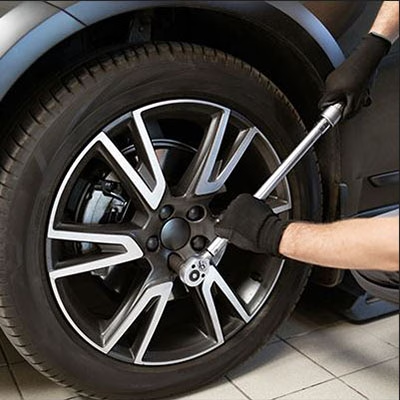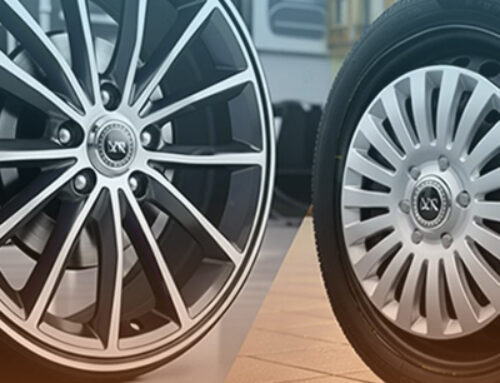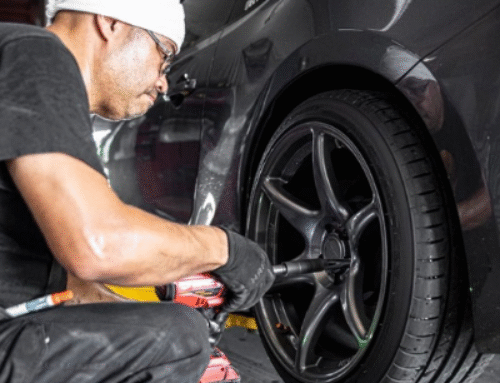The Importance of Proper Lug Nut Torque for Wheel Safety
When it comes to vehicle maintenance, one small but critical detail often overlooked is the wheel lug nut torque importance. Lug nuts are responsible for securing your wheels to your car, and the torque applied to these nuts plays a vital role in ensuring your safety on the road. Applying either too little or too much torque can lead to dangerous situations, including wheel detachment, damaged components, and loss of vehicle control.
In this article, we’ll explore why proper lug nut torque matters, how to apply it correctly, common mistakes to avoid, and answer frequently asked questions—all in an easy-to-understand format, whether you’re a seasoned driver or new to car care.
What Is Wheel Lug Nut Torque?
Wheel lug nut torque refers to the amount of rotational force used to tighten the lug nuts on a wheel. It is measured in pound-feet (lb-ft) or Newton-meters (Nm) and ensures that the wheel is securely attached without putting excessive stress on the vehicle’s components.
-
Under-torque occurs when lug nuts are not tightened enough, increasing the risk of wheel looseness.
-
Over-torque happens when lug nuts are tightened too much, which can damage the wheel, studs, and brake components.
Every vehicle has specific torque specifications provided by the manufacturer. Following these recommendations is crucial to maintain the balance between safety and mechanical integrity.
Why Is Proper Torque So Important?
Understanding the wheel lug nut torque importance goes beyond simply tightening bolts. It is a critical aspect of overall vehicle safety and performance.
1. Vehicle Safety and Accident Prevention
Properly torqued lug nuts prevent the wheels from becoming loose while driving. A loose wheel can cause vibrations, difficulty steering, or even catastrophic accidents if it detaches completely.
2. Protection of Vehicle Components
Over-tightening can warp brake rotors, stretch wheel studs, and even crack wheel hubs. On the other hand, under-tightening can cause excessive movement and wear. Proper torque ensures that all components operate as designed without undue stress.
3. Optimal Vehicle Performance
Correct torque settings contribute to smoother rides and consistent braking performance. Balanced and correctly installed wheels reduce strain on the suspension and steering systems, prolonging their lifespan.
What Happens if Lug Nuts Are Too Loose or Too Tight?
Failing to appreciate the wheel lug nut torque importance can result in serious mechanical and safety issues.
Risks of Loose Lug Nuts
-
Wheel Detachment: The most dangerous outcome, leading to loss of control.
-
Vibrations: Noticeable shaking or wobbling while driving.
-
Uneven Tire Wear: Caused by improper wheel alignment and seating.
Risks of Over-Tightened Lug Nuts
-
Damage to Brake Rotors: Over-torque can warp rotors, leading to poor braking performance.
-
Broken Studs: Excessive force can snap the studs that hold the wheel.
-
Difficult Wheel Removal: Makes emergency roadside changes extremely challenging.
How to Apply the Correct Torque to Lug Nuts
Ensuring the correct torque isn’t complicated. With the right tools and a bit of patience, anyone can do it safely.
Tools You’ll Need
-
Torque Wrench: A precision tool for applying specific torque.
-
Cross Lug Wrench or standard tire iron for initial tightening.
-
Owner’s Manual: To find the recommended torque specification.
Step-by-Step Instructions
-
Verify the Torque Specification
Check your vehicle’s manual or a reliable online source for the correct torque setting. -
Tighten in a Star Pattern
Always tighten lug nuts in a crisscross or star pattern. This ensures the wheel seats evenly against the hub. -
Apply Torque in Two Stages
-
First, snug all the lug nuts lightly using a cross wrench.
-
Then, use a torque wrench to tighten them to the final specification.
-
-
Recheck After Driving
After 50 to 100 miles (80 to 160 km) of driving, recheck and retorque the lug nuts. Wheels can settle during initial use, slightly changing torque levels.
How Often Should I Check Lug Nut Torque?
Maintaining awareness of wheel lug nut torque importance also means knowing when to check it.
-
After Installing New Tires: Always recheck after a few miles.
-
After Wheel or Brake Services: Mechanics may not always torque nuts to spec.
-
During Long Trips: Especially if carrying heavy loads or traveling on rough roads.
-
After Heavy Impacts: Such as hitting a pothole or curb.
Periodic checking takes just a few minutes but could prevent serious problems later.
Frequently Asked Questions About Wheel Lug Nut Torque Importance
✅ Can I Tighten Lug Nuts Without a Torque Wrench?
➡️ While it’s possible to tighten by feel, it’s not recommended. Human estimation is unreliable, and a torque wrench ensures precision and peace of mind.
✅ What If I Don’t Know My Vehicle’s Torque Specification?
➡️ Most car manuals include this information. If unavailable, consult a trusted online database or contact the vehicle manufacturer directly.
✅ Should I Apply Torque to Spare Tires?
➡️ Yes. Even temporary spare wheels must be properly torqued to ensure safety until a permanent replacement can be made.
✅ Is the Torque Different for Aftermarket Wheels?
➡️ Often, yes. Aftermarket wheels may have different requirements compared to OEM (Original Equipment Manufacturer) wheels. Always check the manufacturer’s specifications for aftermarket parts.
Should I Torque Lug Nuts While the Vehicle Is on the Ground?
Ideally, snug the nuts slightly while the vehicle is still slightly lifted, then lower it so the wheel bears some weight without full pressure. Final torqueing should be done with the vehicle resting securely on the ground.
Understanding and practicing proper wheel lug nut torque application is not just for mechanics—it’s essential knowledge for every driver. The wheel lug nut torque importance can’t be overstated: it protects your safety, preserves your vehicle’s components, and ensures the best performance on the road.
By following simple procedures, using the right tools, and being attentive, you can prevent costly damages and, more importantly, avoid dangerous situations. Take the time to double-check your wheel lug nut torque—it’s a small effort that makes a big difference for you, your passengers, and everyone sharing the road with you.
When discussing the importance of wheel lug nut torque, it’s also crucial to consider that using the correct size of lug nut plays a significant role in maintaining wheel security. If you’re unsure about the size of lug nuts required for your vehicle, please read our detailed guide Lug Nuts Size
Looking for the best solutions for your wheels? Let our expertise guide you. Get in touch on (305) 490-2028 | (305) 964-7909. to find out how Wheels Doctor can take your wheel care to the next level.






